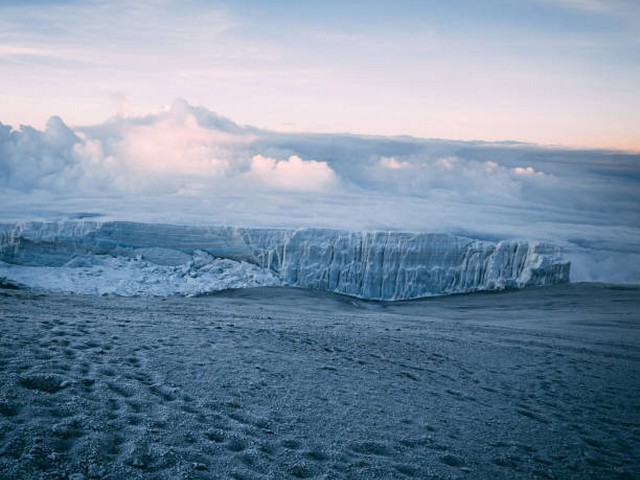How To Trek Kilimanjaro With Minimal Environmental Impact
Standing majestically as Africa’s highest peak, Mount Kilimanjaro beckons adventurers from across the globe. It’s not just a mountain; it’s a symbol of majestic solitude and the vibrant pulse of Tanzania. Here at the Kilimanjaro Centre for Trekking and Ecotourism (KCTE), we understand the allure of Kilimanjaro and the responsibility that comes with treading on such sacred earth. Trekking Kilimanjaro is a dream for many, but how do you achieve this feat with minimal environmental impact?
As stewards of this iconic landmark, we believe in empowering each visitor with knowledge and practices that preserve its beauty for generations to come. In this guide, we’ll explore how you can embrace the majesty of Kilimanjaro while maintaining an eco-friendly approach that respects the natural environment.
Why Minimizing Environmental Impact is Crucial
Mount Kilimanjaro is not only a natural wonder but also a delicate ecosystem that is sensitive to human activity. The mountain’s unique flora and fauna, coupled with its ice-capped summit, are under threat from climate change and environmental degradation. Each step you take can contribute to conservation or to destruction, the choice is yours.
Planning Your Trek with the Environment in Mind
1. Choose the Right Tour Operator
When planning your climb, selecting an environmentally responsible tour operator is paramount. At KCTE, we pride ourselves on sustainable practices and eco-friendly initiatives designed to minimize footprints and maximize conservation efforts. By booking your Kilimanjaro climb with us, you ensure a greener trek.
2. Understanding the Paths
Kilimanjaro has several routes, and each has its own set of challenges and impacts. Routes like the Lemosho and the Northern Circuit offer more solitude and less foot traffic, reducing the strain on the environment. We recommend these paths for those who are particularly eco-conscious.
3. Timing Your Trek
Consider trekking during the shoulder seasons. Overcrowding during peak seasons can strain local resources and wildlife. By visiting in quieter months, you not only enjoy a more solitary experience but also spread the tourist load, which helps in reducing the impact on nature.
Eco-Friendly Trekking Practices
1. Carry In, Carry Out
It’s a simple mantra: whatever you bring to the mountain, you must take back. This includes all types of waste, particularly plastics. KCTE provides all our clients with reusable bags and containers to help manage waste efficiently.
2. Stay on the Path
Straying from marked paths can cause erosion and disturb local flora and fauna. Stick to the trails and respect barrier signs to minimize damage.
3. Use Eco-Friendly Products
From sunscreen to insect repellent, ensure that the products you use are biodegradable and environmentally friendly. Chemicals can leach into the ecosystem, causing long-term damage.
4. Water Consumption
Water resources on Kilimanjaro are limited. Practice water conservation techniques such as taking shorter showers and reusing water when possible. KCTE provides water filtration systems to our clients to reduce the reliance on bottled water.
5. Support Local Communities
Sustainable trekking isn’t just about environmental conservation; it’s also about supporting the local communities. Hire local guides, buy local products, and respect local customs. Your economic contribution helps the communities around Kilimanjaro sustain their livelihoods without resorting to environmentally harmful practices.
Respecting Wildlife and Natural Features
Kilimanjaro is home to a diverse range of wildlife, from colobus monkeys to exotic birds. Maintaining a safe distance and not feeding the animals are practices that preserve the natural balance. Furthermore, respect geological features and vegetation by not removing anything from the site.
What KCTE Does Differently?
At KCTE, our commitment to sustainable trekking goes beyond guidelines. We actively participate in conservation initiatives, provide eco-friendly trekking gear, and conduct regular training for our staff on sustainability practices. By choosing KCTE, you choose a partner who prioritizes the mountain’s well-being as much as your trekking experience.
FAQs About Eco-friendly Trekking on Kilimanjaro
1. What is the best time to trek Kilimanjaro for minimal environmental impact?
Trekking during the shoulder seasons (e.g., late March, June, or October) can reduce your environmental impact by avoiding peak crowds.
2. How can I ensure my trek is eco-friendly?
Choose a certified eco-friendly tour operator like KCTE, follow the leave-no-trace principles, use sustainable products, and engage with local communities respectfully.
3. Are there eco-friendly accommodations on Kilimanjaro?
Yes, KCTE offers accommodations that adhere to eco-friendly standards, focusing on sustainability from water usage to waste management.
In Summary
Trekking Kilimanjaro is a profound experience that stays with you forever. By following eco-friendly practices, you ensure that this majestic mountain remains unspoiled for future adventurers. Remember, a successful summit is not just about reaching the top; it’s about appreciating and preserving the natural beauty that surrounds you.
Are you ready to embark on a sustainable journey to the roof of Africa? Book your trek with Kilimanjaro Centre for Trekking and Ecotourism (KCTE) and take the first step towards a meaningful and responsible adventure. Together, let’s make eco-conscious trekking the norm, not the exception. Join us in protecting the splendor of Kilimanjaro for generations to come.




